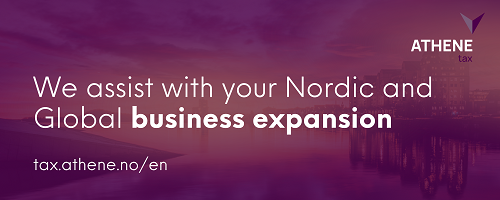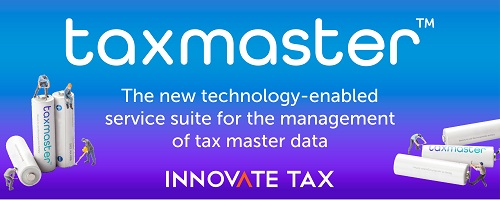The principle statement deals with the VAT treatment of digital works of art according to the VAT Act § 3-7 fourth paragraph.
This statement of principle has been issued to clarify the Norwegian Tax Directorate’s position on the treatment of digital works of art under tax law, and replaces the statement of principle of 13 December 2022 on the same topic.
1. Background
This statement deals with the VAT treatment of digital works of art. Digital works of art here mean works of art in the form of images developed digitally, for example on a computer. The overall question is whether digital works of art are covered by the exception for ” the owner’s sale of his own works of art and copyright to his own literary and artistic works ” according to the Value Added Tax Act (etc.) § 3-7 fourth paragraph.
Section 2 deals with the tax-related classification of digital works of art. Point 3 discusses the assessment of digital works of art in certain other countries. Under point 4, digital works of art are assessed in relation to the exemption in mval. § 3-7 fourth paragraph.
2. Fee-related classification of digital works of art
The starting point in the Value Added Tax Act is that ” value added tax must be calculated on the sale of goods and services “, cf. Section 3-1 first paragraph. The distinction between goods and services has consequences in relation to the duty to pay tax.
According to mval. Section 1-3 first paragraph letter b defines goods as ” physical objects “. Digital artworks are developed and transmitted using digital technology and are normally stored as a computer file or on a blockchain. Consequently, it is not a question of such ” physical objects” as the law requires for them to be considered a good, cf. VAT. Section 1-3 first paragraph letter b.
According to mval. Section 1-3, first paragraph, letter c, services are defined as ” what can be traded and which are not goods according to letter b , including limited rights to goods, and utilization of intangible assets “. According to the provision, services are negatively limited to the concept of goods. In the Value Added Tax Handbook 2022 p. 97, it is stated that:
” The definition of service means that also products that are sold digitally, for example sales of software (…) , news services, music etc. over the Internet, is considered as turnover of service ».
In an extension of the service definition in letter c, it is in mval. Section 1-3 first paragraph letter j provided a more detailed definition of ” electronic services “. The provision states that ” electronic services ” are:
« Remotely deliverable services which are delivered over the internet or other electronic network and which cannot be acquired without information technology, where the delivery of the services is mainly automated. »
In Prop. 1 LS (2022-2023) Taxes, duties and customs 2023 on p. 168, the Ministry of Finance has stated the following about the term ” electronic services “:
” For there to be an electronic service, it must be a remotely deliverable service which is actually delivered over the internet (…) and which cannot be acquired without information technology. The delivery of the service must also mainly be automated. Among other things, the term will include digital products such as film and music, as well as content services such as software and games. »
The definition of electronic services as shown above is designed based on the definition of the same term in the EU, cf. Council Regulation no. 1777/2005 article 11 no. 1.
In a statement of principle issued on 30 June 2011, the Directorate of Taxation has provided a more detailed review of the term ” electronic services “. Here, among other things, an attempt has been made to draw up a non-exhaustive list of various services which by their nature are electronic services. From the principle statement’s enumeration, it appears that ” access to or downloading of images (…)” could be considered electronic services, cf. § 1-3 letter j.
Digital works of art serve as a collective term for works of art that have been prepared with digital aids. These are digital files that are created and stored digitally, either as an ordinary data file or on a blockchain. In the latter case, an NFT is transferred digitally on the blockchain, which is data-driven. The Tax Directorate’s opinion is that both the creation and the transfer of such works of art require electronic technology. Furthermore, we believe that the delivery of such digital objects is mainly automated until this happens by transfer or by delivery of NFT in a blockchain. We point out, among other things, that a downloaded film on a TV will constitute an electronic service even if the film could have been purchased on DVD.
Based on this, it is the Tax Directorate’s opinion that digital works of art must be considered services, including electronic services, cf. § 1-3 letter j. In the following, we refer to how similar questions have been assessed in certain other countries.
3. Fee-related treatment of digital works of art in other countries
Danish dish
The starting point in the Danish tax system is that ” Tax is paid on goods and services, which are supplied for consideration here in the country “, cf. VAT Act of 2019 Section 4. From this point of departure, Section 13 of the VAT Act sets out certain exemptions.
Works of art are defined in greater detail in the VAT Act § 69, fourth paragraph. According to fourth paragraph no. 1, works of art are, among other things, ” Goods belonging to CN code 97 01-97 02 “. In the Danish guide for 2022, it is announced that CN code 97 01 includes ” paintings, collages and the like. drawings and pastels, where the artist has done them exclusively by hand » (our emphasis), while CN code 97 02 includes « original engravings, prints and lithographs ». [1]
The CN numbers referred to above originate from EU law, where Council Regulation No. 2658/1987 states that the CN must have an eight-digit code number where the first six digits must refer to headings and subheadings in the harmonizing system’s collection of various art forms. The last two digits shall identify subheadings in the CN.
Furthermore, it appears from the Danish guide that the special tax rules for works of art only apply in cases where ” imprints on a physical basis ” have been made. In an extension, it appears that:
” Digital photographs, which are sold digitally, are considered for VAT purposes to be the supply of a service and are therefore not covered by the provision. »
According to this, Danish law seems to assume that digital works of art must be considered a service. In this context, reference is made to the definition of the concept of service in § 4 of the VAT Act. It follows from the provision that ” Delivery of a good means the transfer of the right to the owner to dispose of a material good.” Delivery of services includes any other delivery “. According to this provision, the concept of service is limited to goods, similar to the Norwegian Mval. § 1-3 first paragraph letter c.
[1] https://skat.dk/data.aspx?oid=2049362&chk=218293
Swedish right
Works of art are specifically defined in the Swedish Mervärdeskattelag chapter 9 a § 5. Similar to Danish VAT law, EU legal harmonization is applied when CN codes are used. In the Swedish Tax Agency’s legal guide for 2022, it is specified that (under the point “What constitutes works of art, samlarföremål och antikviteter enligt ML?”):
” Digital works of art do not constitute such works of art as referred to in chapter 9 a, section 5 ML. A digital work provided electronically is an electronic service.”
In Swedish law, a line has therefore been taken where, in line with the Tax Directorate’s understanding, digital art is considered an electronic service.
Spanish dish
The Directorate of Taxation points out that on 10 March 2022 the Spanish tax administration made a decision on the tax treatment of digital photographs with associated NFT. [1] The case concerned a person who sold Photoshop-altered illustrations that were auctioned off by making the works’ digital representation in the blockchain (NFT) available for purchase. For potential buyers, this meant that one could buy a right to use the work, but not an underlying ownership.
In the decision, particular emphasis is placed on the fact that it appears that the object for sale is the NFT which links to the digital work. This indicates that it is not a product, but rather a service as long as the buyer does not receive a physical object. Furthermore, it is assumed that this is a type of service that cannot be achieved without electronic processing, where minimal requirements are also placed on human processing. Based on this, it is concluded that the sale in the VAT context is to be regarded as the sale of an electronic service. The definition that is used as a basis follows the current definition in the EU, cf. Council Regulation 1777/2005 article 11 no. 1 which also formed the basis for a corresponding definition in mval. Section 1-3 first paragraph letter j, cf. also our review under point 2.
[1] The Spanish Tax Administration of 10 March 2022, case number V0482-22.
4. Digital works of art according to the Value Added Tax Act § 3-7 fourth paragraph
From the starting point in mval. § 3-1 subsection 1, as mentioned under point 2, the Value Added Tax Act sets out a number of exceptions from the general duty to pay tax. The relevant provision in this case is mval. Section 3-7 which sets out exceptions for art and culture. The provision’s fourth paragraph states that:
” The author’s sale of his own works of art and copyright to his own literary and artistic works is exempt from the law. The same applies to such turnover through an intermediary in the name of the owner. »
A natural linguistic understanding of the provision’s wording suggests that the provision contains both a goods exception and a service exception. The wording “copyright” refers to intellectual property rights, which according to the Norwegian Civil Code. Section 1-3 first paragraph letter c is defined as a service. The fact that the provision contains such a service exception is further taken as a basis in the preparatory work. We refer here to Ot.prp. no. 2 (2000-2001) section 7.2.6.5 where it is stated that the exception:
” applies to sales by the originator (artist) of their own original works of art (…) . The ministry proposes that authors’ and composers’ turnover in the form of exploitation of copyright for their own literary and artistic works should be tax-treated in the same way as artists’ turnover of their own original works . (our emphasis)
The Tax Directorate’s understanding is that the provision contains two separate exceptions. Part of the exception applies to physical objects such as physical paintings, sculptures, etc. Furthermore, an exception is drawn up in the case of exploitation of copyright. As the Tax Directorate’s opinion is that digital works of art cannot be regarded as goods, the further review will assess whether the service exemption can be applied to the sale of such objects.
In Ot.prp. no. 2 (2000-2001) p. 131, in connection with the introduction of the service exception, it is assumed that the exception for transfer of copyright to one’s own literary and artistic works will apply “for example books, stage works, including radio plays, musical works and processing of such works ». The wording ” for example ” indicates that the list is not exhaustive.
In the service reform of 2001, the wording ” revenue from the author through his own exploitation of copyright for his own literary and artistic works ” was chosen. In connection with the new VAT Act of 2009, the wording of the provision was changed from ” exploitation of copyright ” to ” turnover (…) of copyright “. The Tax Directorate’s opinion is that the new wording, according to a common linguistic understanding, can be said to limit what is covered by the exception.
In the preparations for the new VAT Act of 2009, Ot.prp. no. 76 (2008-2009) p. 55, it is, however, assumed that the provision in section 3-7 fourth paragraph is ” a continuation of the Value Added Tax Act section 5 first paragraph no. 1 letter a “. This can be interpreted in the direction that the wording ” trading (…) of copyright ” also includes cases where trading takes place through “exploitation of copyright “.
Consequently, the Tax Directorate’s opinion is that the wording ” turnover (…) of copyright ” also applies to cases where exploitation of copyright takes place . This would be, for example, cases where an artist develops a digital work of art and sells it. In these cases, an ” exploitation of copyright ” is the basis for the turnover. However, we assume that the digital artwork in such cases meets the requirements for intellectual property, cf., among other things, the Value Added Tax Handbook 2022 p. 292.
In summary, it is the Tax Directorate’s understanding that sales of digital works of art are covered by the exemption in VAT. § 3-7 fourth paragraph both in cases where the owner transfers the actual copyright to the digital work of art and in cases where the copyright remains with the artist. In both cases, there is an ” exploitation of copyright ” which forms the basis of the turnover. This is considered to be covered by mval. § 3-7 fourth paragraph.
5. Conclusion
The Directorate of Taxation concludes that sales of digital works of art are covered by the exception in the Value Added Tax Act § 3-7 fourth paragraph.
Source: skatteetaten.no














